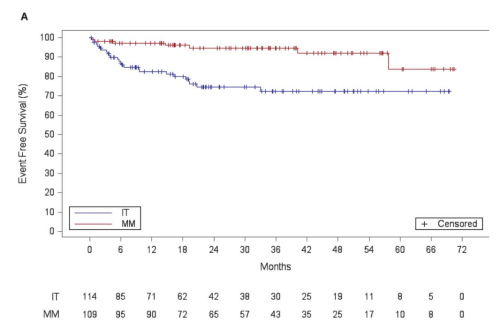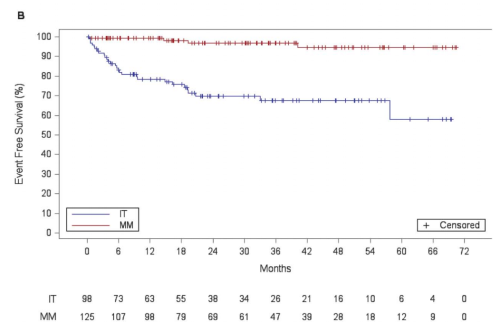Leading Cause of Stroke in Young Going Untreated – and It Shouldn’t, Study Finds - AVMs
Lots of questions for your doctor to answer.Unruptured cerebral arteriovenous malformations are better off treated medically: the ARUBA trial
A cerebral arteriovenous malformation (AVM) is an abnormal set of direct connections between the arteries and veins in the brain. These can cause a variety of neurologic symptoms, especially if they are large, and especially if they rupture.
arteriovenous malformation in the great cerebral vein of Galen; from Wikipedia user Filip em via Dr Laughlin Dawes
Their intention-to-treat analysis favored event-free survival in the medical management (MM; red) group:

Mohr et al 2017; doi: 10.1212/WNL.0000000000004532

Mohr et al 2017; doi: 10.1212/WNL.0000000000004532
No comments:
Post a Comment